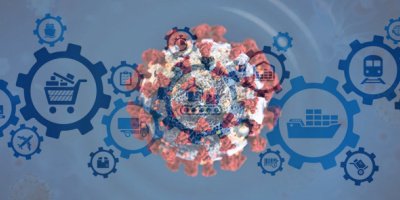Last Tuesday, IBM gave itself something new to talk about at the fall COMMON Conference that is taking place today in Denver. The computer giant made several announcements that position the iSeries as a more powerful and cost-effective platform for workload consolidation.
IBM's announced enhancements increase the iSeries' ability to integrate and manage operating environments other than OS/400. Among the enhancements is a new, competitively priced Integrated xSeries Server (IXS) that uses a single 1.6 GHz Intel Xeon processor with a 512 KB L2 cache. The new IXS should offer at least 60% greater processor speed than the previous high-end IXS, which ran on a 1 GHz Pentium III with no cache. This will allow the IXS to support applications for which it has lacked adequate horsepower, such as application serving within three-tier architectures.
As an added bonus, IBM set the U.S. list price for the new card at $1,900, significantly less than the $2,800 it charged for the 1 GHz IXS. Moreover, memory features for the faster Xeon IXS cost about 55% less on a per-MB basis than memory for Pentium III IXS cards. Since IBM still intends to sell Pentium III IXS cards and memory, it reduced their prices by around 55% as well. This brings the list price of the 1 GHz IXS down to $1,300. As a result, the IXS product family is now better able to compete with standalone Intel servers that have regularly beaten the iSeries cards on a price/performance basis.
In a related announcement, IBM increased the number of Integrated xSeries Adapters--which create bus-level connections between the iSeries and selected xSeries Intel servers--that selected iSeries models can support. On November 15, 2002, IBM will double the number of IXAs that the iSeries Models 820, 830, and 840 can host to 8, 16, and 32 IXAs, respectively. This should allow more iSeries customers--at least those who standardize on the xSeries--to manage all of their Intel servers from the iSeries.
Organizations that use the iSeries as a Linux platform also got a boost from IBM last Tuesday. Customers who own a Model 270 or 8xx with 1 to 4 processors and that run OS/400 V5R2 in their primary logical partition (LPAR) can now host two to three times the number of Linux LPARs they could previously support. The following table shows the increased LPAR capacities.
|
Expanded Linux LPAR Capabilities on 270 and 8xx Models
|
||||
|
# of CPUs
|
Maximum Total LPARs
|
Maximum OS/400 LPARs
|
NEW Maximum Linux LPARs
|
OLD Maximum Linux LPARs
|
|
1
|
10
|
4
|
9
|
3
|
|
2
|
20
|
8
|
19
|
7
|
|
4
|
32
|
16
|
31
|
15
|
|
>=8
|
32
|
32
|
31 (no change)
|
31
|
In effect, IBM's announcement removes the old limit of four Linux LPARs per processor. It allows iSeries servers to host as many as 10 Linux LPARs per CPU provided that they do not exceed the overall limit of 32 LPARs.
IBM also tipped its hat to the iSeries' AIX runtime environment, known as OS/400 PASE, by delivering on enhancements it promised in June of this year. At that time, IBM pledged that PASE users running OS/400 V5R2 would be able to build and compile C and C++ applications within PASE rather than on a separate AIX server. IBM also stated that programs running on the V5R2 version of PASE would be able to launch the iSeries-integrated Java Virtual Machine (JVM) and that the JVM would support native methods implemented as procedures within an OS/400 PASE executable.
In last week's announcement, IBM declared that these capabilities are now available. On the development front, the computer giant announced that V5R2 PASE can run the compiler programs within its C for AIX and VisualAge C++ Professional for AIX development tools. It also made good on its PASE-JVM integration promises. As a result, porting and integrating AIX applications into an iSeries environment will now be significantly less complicated than it was previously.
As the above announcements make clear, IBM is intent on extending the server and workload consolidation capabilities of the iSeries. In particular, IBM is beefing up the consolidation strengths of its entry-level and midrange iSeries models by enabling them to support more Linux LPARs, manage more xSeries systems, and host more powerful on-board Intel servers.
IBM's moves make sense from the perspective of Andrews Consulting Group. Over the last year, we have seen a growing number of smaller mid-market organizations looking to consolidate their workloads, especially those running on Intel servers. One of the issues these firms face is that their entry-level and midrange iSeries servers lack the capacity and performance to manage all of the Intel servers in their IT environments. However, last Tuesday's announcement goes a long way toward addressing this issue. For example, check out the following table to see what owners of two-way iSeries 820 servers gained with last week's announcement.
|
An Announcement Snapshot of the Two-Way i820
|
|
|
Supported Before 10/8/02
|
Supported After 10/8/02
|
|
12 Pentium III IXS cards @ 1 GHz
7 Linux LPARs
4 IXA cards Number of Intel server footprints that can be consolidated: 23 |
12 Xeon IXS cards @ 1.6 GHz
19 Linux LPARs
8 IXA cards Number of Intel server footprints that can be consolidated: 39 |
In short, IBM has increased the number of server footprints that many iSeries models can support and, in the process, improved their price/performance as consolidation platforms for Windows and Linux workloads. Understand, however, that the only customers who can enjoy these benefits are owners of Models 270 and 8xx. These owners also face operating system constraints; OS/400 V5R1 or V5R2 is required to support the additional IXA cards, while V5R2 is required for the Xeon IXS, OS/400 PASE, and the additional Linux LPARs. In other words, IBM is not only trying to consolidate non-OS/400 workloads onto the iSeries, but get customers to consolidate their older AS/400s onto the latest iSeries technologies.
Lee Kroon is a Senior Industry Analyst for Andrews Consulting Group, a firm that helps mid-sized companies manage business transformation through technology. You can reach him at






















 More than ever, there is a demand for IT to deliver innovation. Your IBM i has been an essential part of your business operations for years. However, your organization may struggle to maintain the current system and implement new projects. The thousands of customers we've worked with and surveyed state that expectations regarding the digital footprint and vision of the company are not aligned with the current IT environment.
More than ever, there is a demand for IT to deliver innovation. Your IBM i has been an essential part of your business operations for years. However, your organization may struggle to maintain the current system and implement new projects. The thousands of customers we've worked with and surveyed state that expectations regarding the digital footprint and vision of the company are not aligned with the current IT environment. TRY the one package that solves all your document design and printing challenges on all your platforms. Produce bar code labels, electronic forms, ad hoc reports, and RFID tags – without programming! MarkMagic is the only document design and print solution that combines report writing, WYSIWYG label and forms design, and conditional printing in one integrated product. Make sure your data survives when catastrophe hits. Request your trial now! Request Now.
TRY the one package that solves all your document design and printing challenges on all your platforms. Produce bar code labels, electronic forms, ad hoc reports, and RFID tags – without programming! MarkMagic is the only document design and print solution that combines report writing, WYSIWYG label and forms design, and conditional printing in one integrated product. Make sure your data survives when catastrophe hits. Request your trial now! Request Now. Forms of ransomware has been around for over 30 years, and with more and more organizations suffering attacks each year, it continues to endure. What has made ransomware such a durable threat and what is the best way to combat it? In order to prevent ransomware, organizations must first understand how it works.
Forms of ransomware has been around for over 30 years, and with more and more organizations suffering attacks each year, it continues to endure. What has made ransomware such a durable threat and what is the best way to combat it? In order to prevent ransomware, organizations must first understand how it works. Disaster protection is vital to every business. Yet, it often consists of patched together procedures that are prone to error. From automatic backups to data encryption to media management, Robot automates the routine (yet often complex) tasks of iSeries backup and recovery, saving you time and money and making the process safer and more reliable. Automate your backups with the Robot Backup and Recovery Solution. Key features include:
Disaster protection is vital to every business. Yet, it often consists of patched together procedures that are prone to error. From automatic backups to data encryption to media management, Robot automates the routine (yet often complex) tasks of iSeries backup and recovery, saving you time and money and making the process safer and more reliable. Automate your backups with the Robot Backup and Recovery Solution. Key features include: Business users want new applications now. Market and regulatory pressures require faster application updates and delivery into production. Your IBM i developers may be approaching retirement, and you see no sure way to fill their positions with experienced developers. In addition, you may be caught between maintaining your existing applications and the uncertainty of moving to something new.
Business users want new applications now. Market and regulatory pressures require faster application updates and delivery into production. Your IBM i developers may be approaching retirement, and you see no sure way to fill their positions with experienced developers. In addition, you may be caught between maintaining your existing applications and the uncertainty of moving to something new. IT managers hoping to find new IBM i talent are discovering that the pool of experienced RPG programmers and operators or administrators with intimate knowledge of the operating system and the applications that run on it is small. This begs the question: How will you manage the platform that supports such a big part of your business? This guide offers strategies and software suggestions to help you plan IT staffing and resources and smooth the transition after your AS/400 talent retires. Read on to learn:
IT managers hoping to find new IBM i talent are discovering that the pool of experienced RPG programmers and operators or administrators with intimate knowledge of the operating system and the applications that run on it is small. This begs the question: How will you manage the platform that supports such a big part of your business? This guide offers strategies and software suggestions to help you plan IT staffing and resources and smooth the transition after your AS/400 talent retires. Read on to learn:
LATEST COMMENTS
MC Press Online